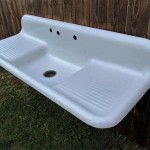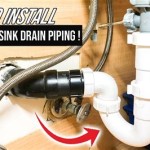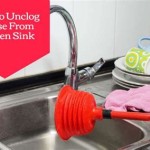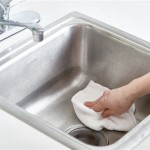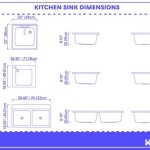How To Clean My Bathroom Sink Drain
A clogged bathroom sink drain is a common household nuisance. Fortunately, several effective methods exist to clear the blockage and restore proper drainage without needing professional assistance. Regular cleaning also prevents future clogs and maintains hygienic conditions.
1. Boiling Water
One of the simplest methods for addressing a slow-draining sink is using boiling water. The heat helps to dissolve soap scum, grease, and other organic materials that may be contributing to the blockage. Carefully pour a kettle full of boiling water directly down the drain opening. This method is often sufficient for minor clogs.
2. Baking Soda and Vinegar
A combination of baking soda and vinegar creates a chemical reaction that can dislodge debris within the drain. First, pour one cup of baking soda down the drain. Follow this with one cup of vinegar. The mixture will fizz, indicating the chemical reaction. Allow the mixture to sit for at least 30 minutes, then flush the drain with hot water.
3. Plunger
A standard cup plunger can effectively create suction to dislodge stubborn clogs. Make sure there is enough water in the sink to cover the cup of the plunger. Place the plunger over the drain opening, ensuring a good seal. Push and pull the plunger vigorously up and down for several minutes. Remove the plunger and check if the water drains freely. Repeat the process if necessary.
4. P-Trap Removal
The P-trap is the curved pipe located underneath the sink. It is designed to trap debris and prevent sewer gases from entering the home. Placing a bucket beneath the P-trap to catch water, carefully loosen the slip nuts connecting the P-trap to the drainpipes. Remove the P-trap and clean out any clogs inside. Once clear, reassemble the P-trap, ensuring the nuts are tightened securely.
5. Drain Snake (Plumbing Snake)
A drain snake, also known as a plumbing snake, is a flexible tool designed to reach further down the drain than a plunger. Insert the snake into the drain opening and rotate it as it is advanced. The snake will either break up the clog or allow you to pull it out. Once retrieved, flush the drain with hot water.
6. Chemical Drain Cleaners
Commercial chemical drain cleaners are available at most hardware stores. These cleaners contain powerful chemicals that dissolve clogs. It is crucial to follow the manufacturer’s instructions precisely as these chemicals can be hazardous. Wear appropriate protective gear, such as gloves and eye protection, when using chemical drain cleaners. This method should be used sparingly due to the potential environmental impact of the chemicals and possible damage to pipes with repeated use.
7. Preventing Future Clogs
Preventing future clogs is often easier than dealing with a fully blocked drain. Regular maintenance can significantly reduce the likelihood of clogs. Avoid pouring grease or oil down the drain. Use a strainer to catch hair and other debris before it enters the drain. Periodically flush the drain with boiling water or a mixture of baking soda and vinegar to help dissolve any accumulating buildup.
8. When to Call a Plumber
If none of the aforementioned methods successfully clear the clog, it may be time to call a professional plumber. A plumber has the expertise and tools to diagnose and resolve more complex plumbing issues that may be beyond the scope of a homeowner. Persistent clogs or recurring issues often indicate a deeper problem within the plumbing system.
9. Understanding Your Plumbing
Familiarizing yourself with the basic layout of your plumbing can aid in troubleshooting and preventing drain issues. Knowing the location of shut-off valves, the P-trap, and the main drain line allows for quicker responses to plumbing emergencies. It's also helpful to understand the materials used in your pipes, as some cleaning methods may not be suitable for all types of piping.
10. Natural Cleaning Solutions
For those seeking environmentally friendly options, several natural drain cleaning solutions exist. A mixture of salt and boiling water can help dislodge minor blockages. Alternatively, pouring a cup of baking soda down the drain followed by a cup of lemon juice can create a fizzing action that helps break down grease and grime.
11. Regular Drain Maintenance
Regular drain maintenance is essential for preventing clogs and maintaining a healthy plumbing system. Implement a routine of flushing the drain with hot water at least once a week. Monthly, use a mixture of baking soda and vinegar or a natural cleaning solution to help break down any buildup. This proactive approach can significantly reduce the occurrence of stubborn clogs.

3 Ways To Clean A Bathroom Sink Drain Wikihow

How To Unclog A Sink The Right Way Youtube

Best Ways To Clean Your Bathroom Sink Drain Yourself

How To Clean A Clogged Sink Remove Stopper Youtube

5 Natural Ways To Unclog A Bathroom Sink Hiller How

How To Clean A Stinky Sink Drain By Home Repair Tutor Youtube

How To Clean A Bathroom Sink Drain

How Often Should I Clean My Drains At Home

How To Unclog A Bathroom Sink The Home

How To Clear A Clogged Drain Reviews By Wirecutter


